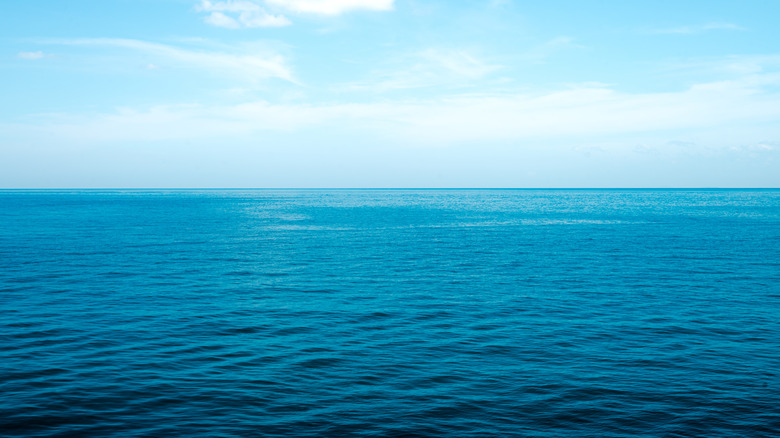Here's What It Feels Like To Die By Drowning
Generally speaking, water is our friend. Medical News Today reports that around 60% of our bodies are made up of it. And failing to keep on top of our fluid intake can affect almost every aspect of our biology, from filtering away waste products to brain function (up to 85 percent of our brains are water). Water is absolutely key, then, and it covers almost three-quarters of the Earth (though, sadly, only around one percent of that water is drinkable as-is, per World Atlas). However, while it's crucial for travel, recreation, and our very survival, water is also deadly.
Centers for Disease Control and Prevention reports that around 3,960 people die by drowning in the United States every year, which equates to about 11 people each day. Drowning, the World Health Organization clarifies, is the process whereby a person's capacity to breathe is impaired by being submerged underwater (usually water). It's not necessarily fatal (a rather common misconception), but it very frequently is. It's a widely-feared, slow, and horrible way to die, as the science behind the process makes abundantly clear. Here's what happens.
Water terrible way to go
It's a slow and painful process, as the body is gradually overwhelmed. This is sometimes dubbed secondary drowning, when breathing is rendered impossible by liquid in the lungs, per Healthline. This is distinct from cases of drowning back on land, which can occur (though rarely) as the body tries to lessen the danger by restricting the respiratory system. This is sometimes referred to as dry drowning.
In a situation where somebody is sucked beneath the water of a river or ocean, they would be able to hold their breath for about a minute and a half on average, according to Outside Online. Guinness World Records reports that Budimir Sobat of Croatia claimed the male record for the longest time holding his breath voluntarily in March 2021, lasting an astonishing 24 minutes and 37.36 seconds. But however much breath somebody has, they will run out sooner or later. During the process, the lack of oxygen causes the blood to lose its red color and the limbs to fill with lactic acid. Terrible aches result.
The water seeping into the lungs overcomes the vital air sacs, Outside Online continues, and this sustained lack of oxygen damages the brain. Survivors have reported that this breaching of the lungs is the most painful part, per Speeli. Within twenty minutes of first being submerged, death results. Apparently, the body sinks, only floating as gases are created as it begins to break down.

